Nikon Nikkor AF-S 300 mm f/4E PF ED VR
3. Build quality and image stabilization
The photo shown below allows you to assess how small the tested lens really is: it is positioned next to the Nikkor 24–70 mm f/2.8. It is clear both instruments are almost of the same size. What’s more, after extending the front element system, the 24-70 mm model is even a bit longer than the Nikkor 4/30 PF which doesn’t change its dimensions. We don’t hesitate to say you deal here with an almost pocket-sized telephoto lens with a very decent aperture fastness for such a focal length to boot.
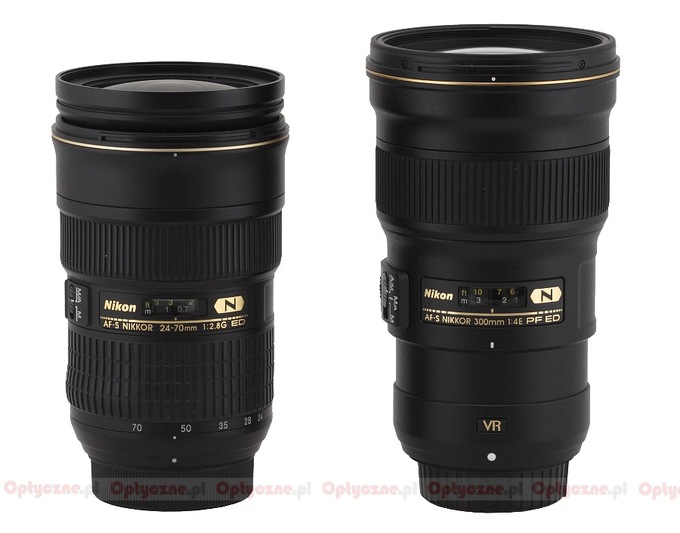 |
Please Support UsIf you enjoy our reviews and articles, and you want us to continue our work please, support our website by donating through PayPal. The funds are going to be used for paying our editorial team, renting servers, and equipping our testing studio; only that way we will be able to continue providing you interesting content for free. |
- - - - - - - - - - - - - - - - - - - - - - - - - - - - - - - - - - - - - - - - - - - - - - - -
The Nikkor AF-S 300 mm f/4E PF ED VR starts with a metal mount surrounding a contact plate and a rear element, 29 mm in diameter. That element is immobile and hidden about 1.5 cm inside the casing. Around it you see a very well matted and darkened tube. Everything at this point is as close to perfection as possible – sealed and blackened nicely.
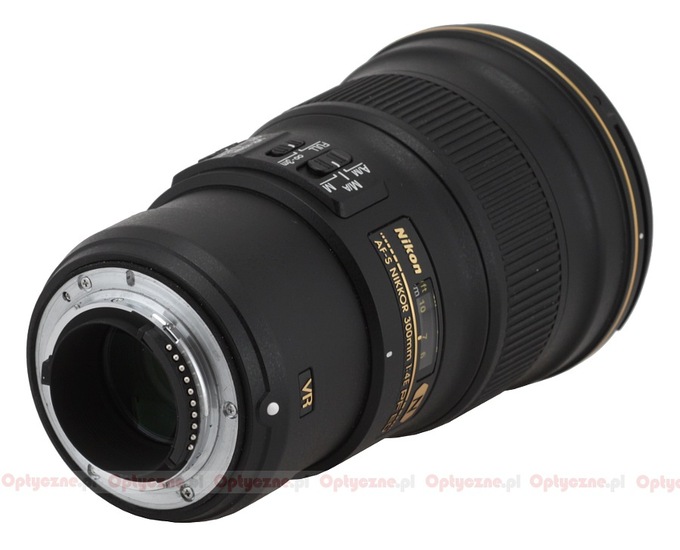 |
The proper body of the lens starts with a black plastic part on which you can find a white dot, making the alignment with a camera easier, the VR letters meaning optical image stabilization and the serial number of the lens. Further on you see a ring for attaching a tripod adapter. Unfortunately the adapter is only optional, you don’t get it in the accessory kit.
Then there is a plate with the name and parameters of the lens with a distance scale window, expressed in feet and meters. Although you deal here with a classic ‘prime’ the producer didn’t include any depth of field scale.
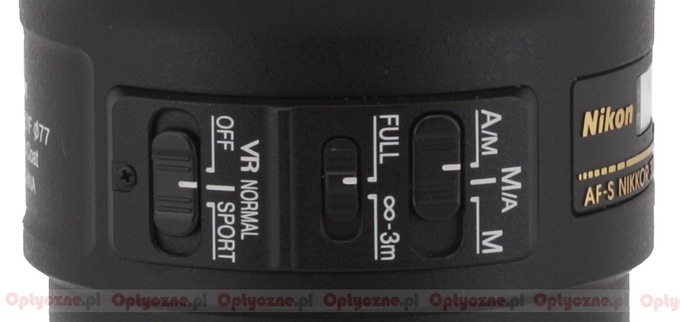 |
On the left side of the plate there are several switches. The first of them allows you to choose the focusing mechanism working mode (A/M, M/A, M), the second is a focus limiter, with two ranges, FULL and from 3 meters to infinity; the last of switches controls the stabilization and you have three possibilities: OFF, VR NORMAL and VR SPORT. Behind the switches you can find inscriptions concerning the technologies employed in the production of the lens (SWM, VR, PF, ED, IF, Nano Crystal Coat) and information that the lens was produced in China. It is actually the most expensive Nikkor made in the Middle Kingdom – interesting but also a bit worrisome.
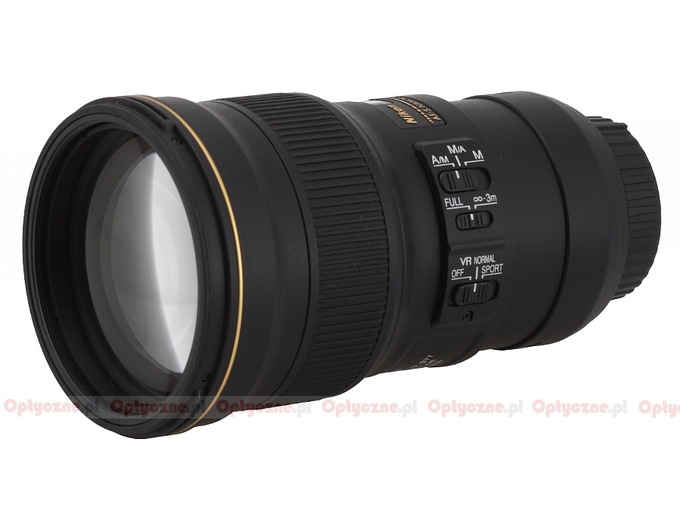 |
The next part of the casing is a ribbed manual focus ring with rubber armour. It is 31 mm wide and its action is smooth and well-damped. What’s interesting it has no visible initial play. Running through the whole distance scale takes a turn through an angle of about 150 degrees. It is a quite sensible value in a lens equipped with an autofocus.
Behind the ring there is an immobile fragment of the casing which ends with a golden stripe and a hood mount. The front element of the lens is 71 mm in diameter, it doesn’t move and is surrounded by a non-rotating filter thread 77 mm in diameter.
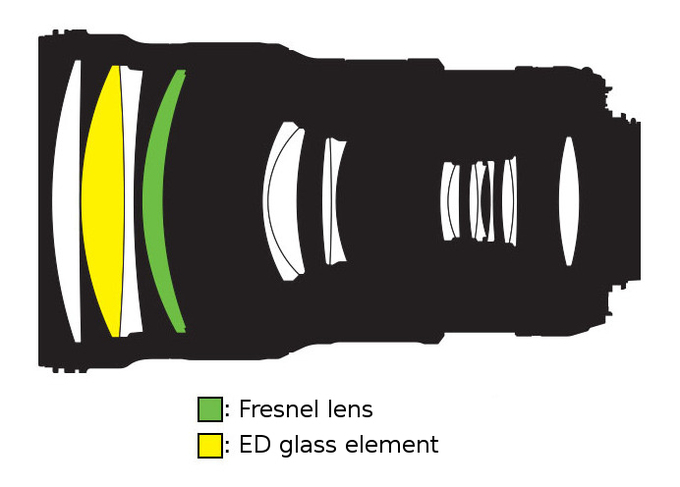 |
When it comes to the optical construction you deal here with 16 elements positioned in 10 groups. One element is made of low dispersion ED glass and one is a Phase Fresnel lens. Both of them are supposed to ensure compact dimensions of the instrument and very good chromatic aberration correction. Inside you also find an aperture with nine diaphragm blades which can be closed down maximally to f/32.
When you glance inside the lens, are the effects of implementing a new technology noticeable? At first sight it would be difficult to spot anything characteristic but if you shine a light under the right angle the Phase Fresnel lens parts are clearly visible. The photos below show how it looks in normal scale and magnified under a microscope.
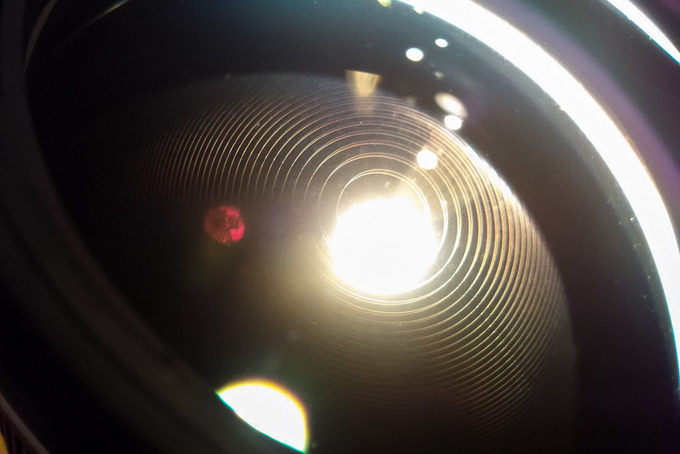 |
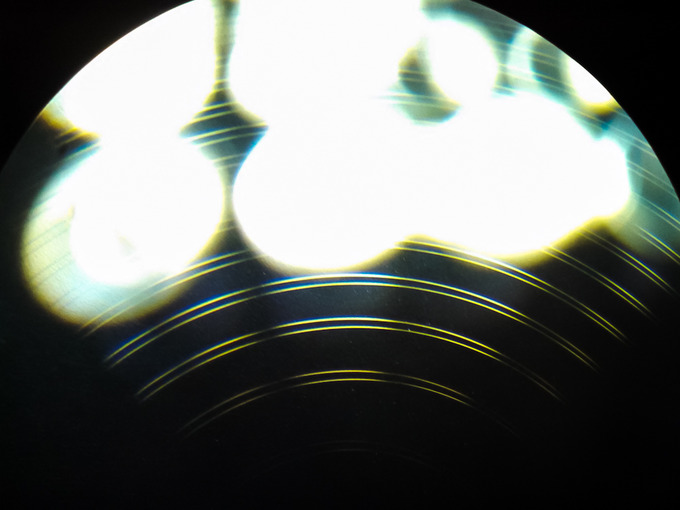 |
The buyers get a snap-on front lens cap LC-77, the rear cap LF-4, a hood HB-73 and a semi-soft lens case CL-M3 in the box.
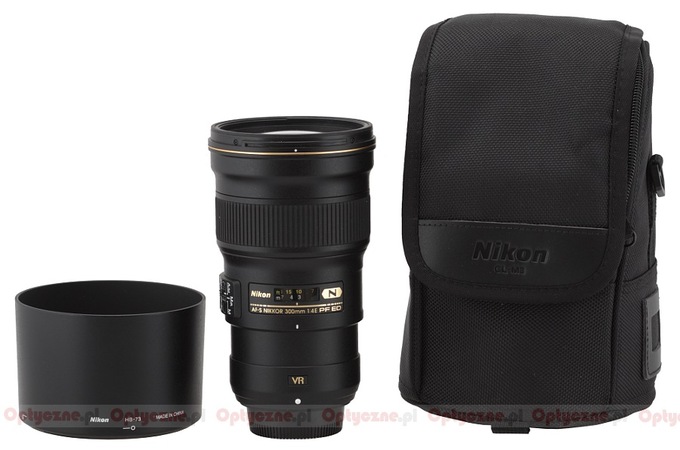 |
Optical stabilization
According to the producer the stabilization efficiency of the tested lens is supposed to amount to 4.5 EV. In order to check that claim we took several dozen photos at 300 mm focal length with shutter speeds ranging from 1/320 to 1/3 of a second with the stabilization switched on and off. Then we calculated the percentage of blurred photos at every speed and presented the results as exposure time function graph, expressed in EV (with 0 EV being the equivalent of 1/250 of a second). The results can be seen below as a graph.
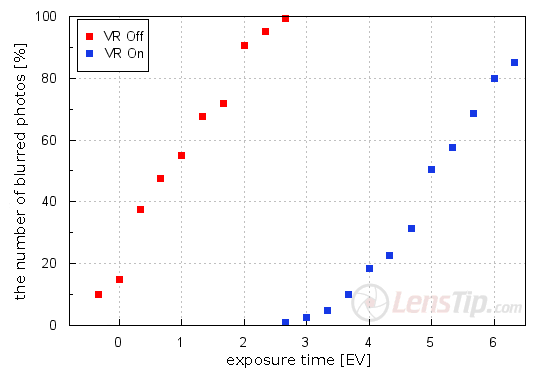
The maximum distance between both curves amounts to about 4.3 EV –it is an excellent result, within the margin of error in perfect accordance with the declaration of the producer. A round of applause!
*I know that after a moment several Pentax enthusiasts will write that this lens covers full frame. Perhaps it does, like it is done by the cheap 1.8/35DX. Still the DA* mark indicates unambiguously that it is not designed for full frame and I said that much, nothing else.






